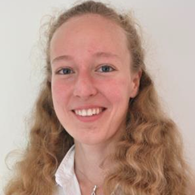Photo credit David BrohedeThe activities within the division include a broad spectrum of problems in sensor fusion, system identification, robotics and autonomous systems, optimization for control applications and complex networks, and they aim at a good and productive balance between theoretical developments and industrial applications.
Sensor fusion deals with how to combine information from different sensors in the best way, and system identification concerns data driven modelling of dynamical systems. Within robotics and autonomous systems the focus is on planning and controlling the position and orientation of a system with a minimum of manual interaction. The activities within optimization include algorithm development for model predictive control, and the complex networks area deals with different types of interactions in dynamic networks.
Examples of application areas of industrial importance are modelling and control of industrial robots, sensor fusion and decision support in cars, ships and aerial vehicles, and planning and control of autonomous vehicles.
Automatic Control (RT)
Automatic control is the art of making technical systems behave as we want.
News
Research and collaborations in Automatic Control
Education in Automatic Control
Contact
Management
Head of Division
Administrator
Director of studies
Faculty
Publications
2026
2025
 Continue to DOI
Continue to DOI
 Continue to DOI
Continue to DOI
 Continue to DOI
Continue to DOI









































